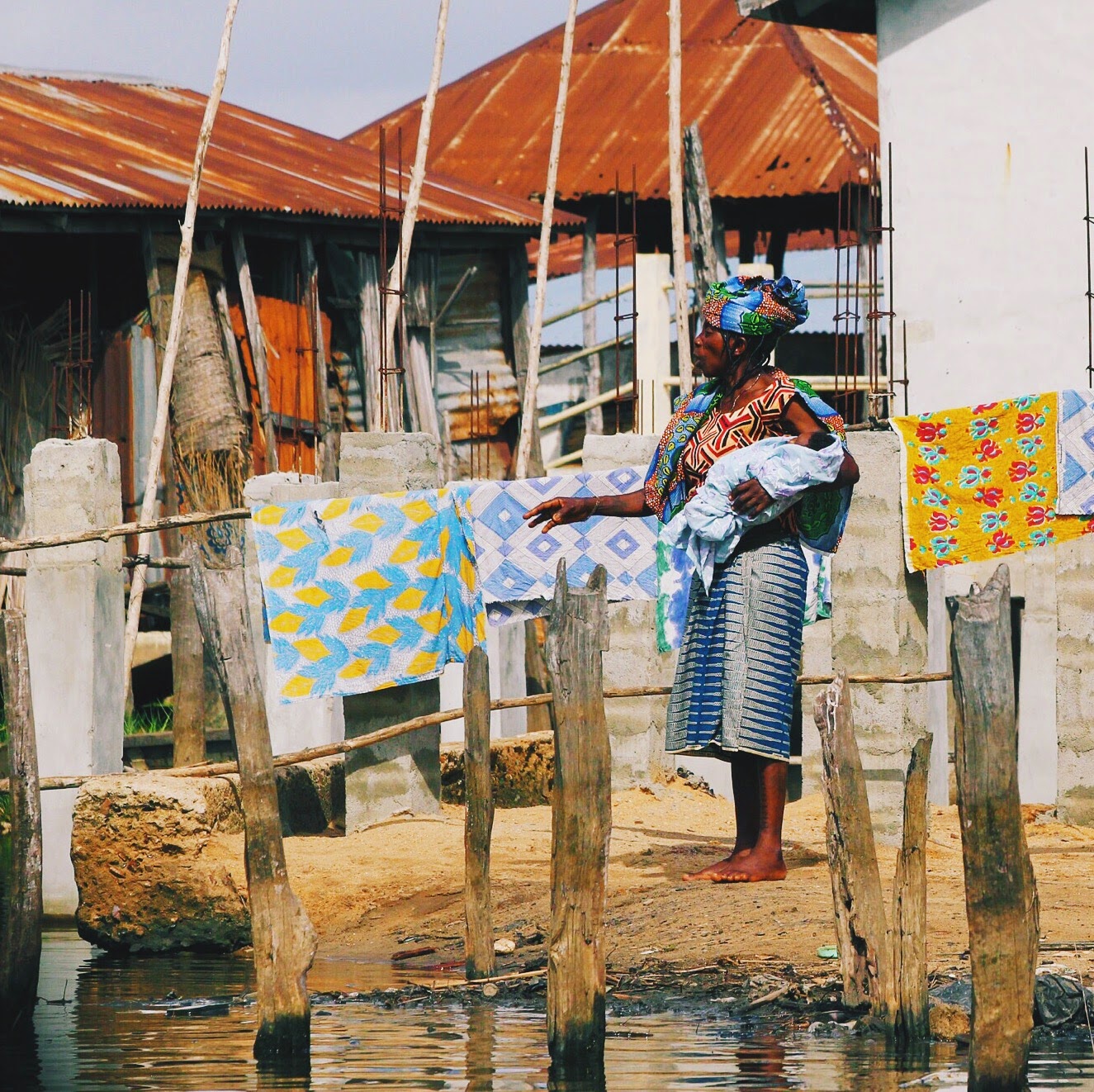Exploring West Africa with Silversea's Silver Explorer, starting in Accra, Ghana on 10 April 2013 and ending in Dakkar, Senegal on 26 April 2013.
April 13th, 2013
Population of Benin (2013 estimate):
10.32 million
Population of Porto-Novo, the capital city (2009 census): 267,000
Currency: 620 (XOF franc) ~ US$1
Demonym (people from Benin are called): Beninese
GDP per capita (2012 estimate) =
US$ 794 (in Kuwait it’s $45,824)
HDI (2013): 0.476,
i.e. 165th in the rank of all countries
Ganvie is a lake village in Benin that is not far off from Cotonou, the largest city in the country. Ganvie has a population of 20,000 which is pretty impressive for a village built on a lake! Why would people choose to live on a lake when they come from a continent as big as Africa? A slave trading tribe, Dahomey, had a religious ban on their warriors to enter the water, making the islands in the lagoon a safe territory for other tribes.
Before getting on little boats that would take us to explore this fascinating lake village, we saw the fishermen along the shore selling their catch. We were told people here on the shore didn’t like to have their picture taken, but once we got into the lake village, everybody was readily smiling for and welcoming us to take pictures.
Imagine living on a lake. There are people who choose to live in boats by the shore, or on ships that travel throughout the year, but to have your house on a lake must be something else. I wonder how kids go to school, how early would they need to learn to swim, how would they play hide and seek, and do they keep any pets? Kids today who live in modern societies take so many things for granted. I think many of them would grow up to be much more responsible adults if given the opportunity from an early age to be exposed to how other children around the world live their lives.
 |
| Look at this piece of elaborate construction of Islamic Art in the middle of these above-water shacks. |
About 17% of the population of Benin, some 1.6 million people, follow Vodun. This does not count other traditional religions in Benin. In addition, many of the 41.5% of the population that refer to themselves as Christian practice a syncretized religion, not dissimilar from Haitian Vodou or Brazilian Candomblé; indeed, many of them are descended from freed Brazilian slaves who settled on the coast near Ouidah.
Ouidah is a city on the Atlantic coast of Benin that is known for having a dark history of slave-trading. The Portuguese, English, Dutch and French all constructed forts in the city to protect their interests in slaving, and for more than 200 years, the main commodity they traded was people. The Portuguese first reached the town in 1580.
Ouidah is a city on the Atlantic coast of Benin that is known for having a dark history of slave-trading. The Portuguese, English, Dutch and French all constructed forts in the city to protect their interests in slaving, and for more than 200 years, the main commodity they traded was people. The Portuguese first reached the town in 1580.
The Gateway of No Return is an arched monument that was constructed for the memory of all those slaves who left the beautiful coast of Benin and never returned.
“Slave traders rounded up men, women and children, at times trapping them with nets. Their catchment area stretched deep into Africa, even as far as Ethiopia and Sudan. Once caught the slaves were forced to walk in chains, hundreds of miles to Ouidah. Once there, they were subjected to a brutal process of brainwashing.
Taken down the slave route they were made to walk around a supposedly magical tree called the Tree of Forgetfulness. Men had to go round it nine times, women and children seven. This experience, they were told, would make them forget everything - their names, their family, and the life they had once had.
As if this was not enough, the slaves were then locked into a dark room, built to resemble the hulk of a ship. In the local language this room was called Zomai, meaning literally: "There, where the light is not allowed.” Its foundations are still visible and the place still seems to exude evil spirits and terror.
After several weeks - or even months - in this hell hole, the slaves were packed in ships for the long crossing to the Americas.” (1)
It was a hot and humid day when we walked on the path that led to the arch. It was hard for me to imagine that chained humans were dragged on this same path, away from their families, into forced labor, and that this happened for more than 200 years.
 |
| Tour guide taking us down the path to the arch |
So we boarded the ship, and had one full day at sea sailing 284 nautical miles towards Takoradi, Ghana!
Here are a few more pictures from Benin…
 |
| Friday sermon on a boat |
 |
| Washing fishnets |
 |
| What to cook for dinner? |
 |
| You think my laundry’s ready? |
 |
| Around the neighborhood where the Gateway of No Return is |
 |
| Closer to the capital |
1. Branford, Sue. "Benin's Dark Past of Slavery." BBC News. BBC, 07 Sept. 2006. Web. 18 Mar. 2015.













